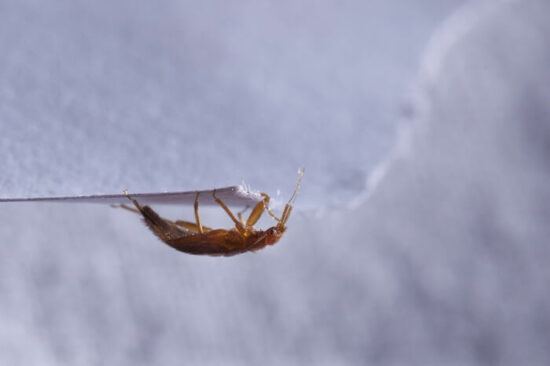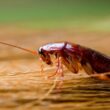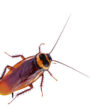If you want to learn how to treat books for bed bugs, you’ve come to the right place.
But that’s not all you should be aware of. This is one of the most misunderstood pest-related situations out there!
Not only is it important to know how to get bed bugs out of books, but you also need to know why it’s happening in the first place. If you don’t know the root cause, you’ll never be able to ensure that they won’t come back in the future.
Let’s get started.
Table of contents
Do Bed Bugs Live & Hide In Books?
Bed bugs are appropriately named for their habit of living in mattresses and bedroom furniture. However, that’s not the only place they’ll reside.
This may come as a surprise to many, but bed bugs can live in books!
These pests prefer to stay close to their food source to feed in the dead of night. That’s why most of them stick to living in the bedroom where you sleep.
If you have a pile of books sitting on your bedroom floor or a fully stocked bookshelf, there’s a good chance that it could harbor bed bugs. All these bloodsuckers need is a dark and discrete place to hide. Usually, they gravitate towards cracks and voids in nearby furniture.
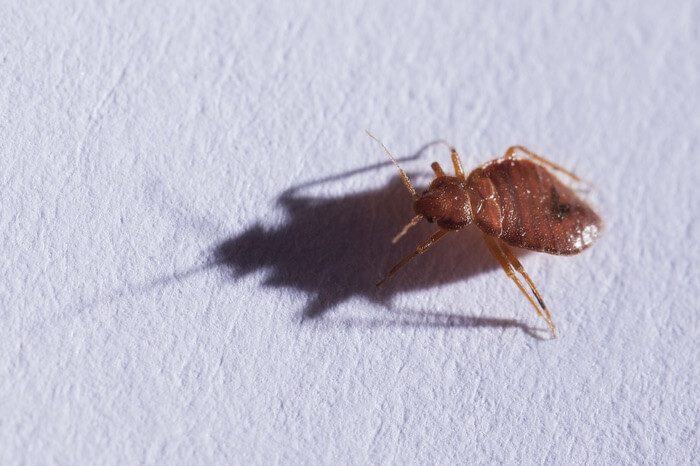
However, their hiding requirements are pretty simple and straightforward.
- Kill bed bugs and bed bug eggs
- Use spray as a spot treatment around bed frames, mattress seams/tufts/folds, and baseboards
- Kills even the toughest bed bugs
- The continuous spray Comfort Wand easily gets into hard-to-reach areas
The bed bug nest needs to be away from light, far from would-be predators, and not prone to disruption. We’re all guilty of letting books sit unread for months. So, books become pretty enticing for these creatures.
What types of books are bed bugs most likely to invade?
It’s not the paper that the insects are attracted to (more on that later), so most will avoid paperback books. Paperbacks are far too tight and don’t offer the amount of space that these pests need to move freely.
On the other hand, hardback books are right up their alley.
Take a moment to examine a hardback. You’ll notice that there are tons of tiny voids around the back strip. If you’re dealing with a bed bug infestation, you might find some hiding in the space between the binding and the spine.
Quick Tip: They can also hide out in book covers, paper sleeves, and any other small accessible spot they find!
How To Treat Books For Bed Bugs
Treating books for bed bugs can be a challenge. Books are delicate by nature. Pair that with the resilience of these parasitic pests, and you have a difficult task getting them out.
There are many misconceptions and potentially dangerous tips out there when it comes to teaching people how to treat books for bed bugs. Instead of putting yourself and your belongings at risk, stick to these proven methods!
1. Apply Heat
One of the most effective ways to eradicate bed bugs is to use heat. Like many household insects, bed bugs can tolerate a wide range of temperatures. However, they do have a limit.
Quick Tip: Bed bugs start to succumb to heat when temperatures rise to 118 degrees Fahrenheit. That’s the bare minimum to start killing them, but the process is a little slow. Even higher temperatures up to 140 degrees will speed things up.
There are a couple of ways to apply heat to get bed bugs out of books. If you get help from a professional extermination company, you can request that they use heaters to get the job done.
Professionals utilize whole-home heaters that can raise the temperature to unbearable settings. This equipment usually reaches 150 to 160 degrees.
It still takes a while to complete. Plus, there’s a lot of preparation work involved to avoid damaging items in your home.
That said, it’s a relatively safe way to take advantage of the heat. Not only that, but it treats larger areas. Instead of just focusing your attention on your books, you can eliminate bed bugs hiding in other discrete places!
Are you looking for a more controlled, DIY option? If you live in a hot climate, try using your car!
In just one hour of sitting in the sun, your car’s interior can reach the bug-killing minimum of 118 degrees. Let it sit out a little more, and the cabin may get up to 150 degrees or more in the summer.
Your car is a safe and confined space, so why not use it to your benefit? Place the infested book into a plastic bag and seal it up tightly. Then, leave it in your car all afternoon!
The heat should kill the bed bugs in your books in a matter of hours.
2. Freeze Them
On the opposite end of the climate spectrum, you can use the power of freezing temperatures.
Now, bed bugs don’t die off as quickly in cool temperatures. They can remain active in environments as low as 46 degrees. But even after they stop moving, they might still be alive.
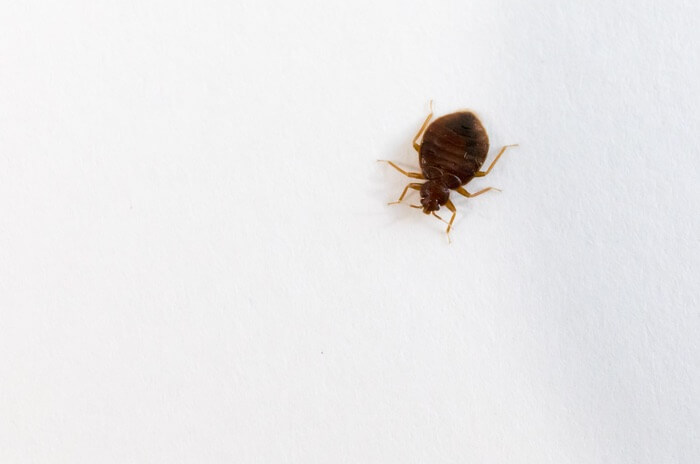
That’s because bed bugs can lower the freezing point of their body fluids. This behavior lets them survive in even lower temperatures!
All that said, most professional exterminators will agree that a few hours in a deep freezer should be enough to kill any bed bugs that are in your books.
To start, grab a plastic bag and put your book inside. The bag serves two purposes. Not only does it keep the bugs contained, but it also prevents moisture from damaging the pages of your book.
Now, put it in the freezer. Leave it there for at least five hours. If you can keep it there overnight, that’s even better!
Quick Tip: We also recommend using a deep freezer if you have access to one. Standard residential freezers only get as low as 0 degrees Fahrenheit. Larger deep freezes can get as low as -50°F!
The cooler the machine gets, the more effective it’ll be for bed bugs. After the freezing process is over, all you need to do is take the book out and dispose of the dead insects!
3. Isolate The Books
Here’s an interesting tip.
Instead of using heat or cool temperatures, you can simply deprive the bugs of food!
But be aware, isolating them takes time. Bed bugs can live up to 400 days without a meal (which is why they live so long in plastic bags). So if you go this route, be prepared to not have access to your books that have been affected for at least a year!
Simply place your book in a sealed plastic bag, then put it in storage. Whether you use a rentable storage unit or a shed in your backyard, the goal is to keep them far away from any available food sources.
Make sure to leave the books in isolation as long as possible for optimal results.
Quick Tip: It’s worth pointing out that this is the least effective way to treat books for bed bugs, but it’s also the method that will require the least of your hands-on time.
4. Use Insecticidal Spray
Finally, you can always utilize insecticides as a way to treat books for bed bugs.
- Kill bed bugs and bed bug eggs
- Use spray as a spot treatment around bed frames, mattress seams/tufts/folds, and baseboards
- Kills even the toughest bed bugs
- The continuous spray Comfort Wand easily gets into hard-to-reach areas
Bed bug-killing sprays are available at many stores. You can even find products that specifically target these blood-sucking insects. Anything that contains permethrin should do the trick.
Homemade sprays can work as well. Simple solutions of vinegar and aromatic essential oils offer up a more natural approach.
Whatever you do, it’s best to exercise caution here. If necessary, try to seek professional help to avoid damage. Some sprays can stain book pages.
Apply the formula directly to the spine of the book. After it kills the bed bugs, follow up with a vacuum cleaner to remove any eggs and dead insects.
It’s also a good idea to make use of residual sprays. Bed bugs can always come back. High-quality deterrents will make that less appealing for them in the future.
The Chance Of Bed Bugs Spreading Through Books
Bed bugs are some of the most notorious hitchhikers around.
Most serious infestations occur accidentally, but bed bugs can spread quite fast. People can bring these insects into their homes after encountering them at hotels, public transportation seats, and more.

But what about books?
Unfortunately, books are an excellent place for these critters to hide.
Those small cracks in the spine are safe havens that they take full advantage of. Whether you carry it in your arms or you toss it in a backpack, bed bugs stay protected along the way. That means that they can quickly spread whenever they reach a different destination.
The bugs can use books to spread from room to room in your house. Not only that, but they can spread from house to house or library to library!
Quick Tip: In your home, the chances of bed bug proliferation are high. These insects will leave the confines of the book at night to feed. Once they eat, they can move to other areas and lay eggs to boost population numbers.
If you move the book from one room to the next, you’re only making it easier for them!
Used and rented books can lead to massive infestations, too.
Most people don’t realize this, but public libraries commonly have issues with bed bugs in their books. Those massive collections go out to thousands of homes in the area. All it takes is a couple of hitchhikers from an infested home.
Before you know it, the bed bugs can set up shop in the library, hide in other books, and flourish in different houses! It’s such a huge problem that many libraries have special precautions to deal with these issues!
Will Putting Books In The Microwave Work?
Earlier, we talked about how heat is one of the most effective ways to get rid of bed bugs. The methods we covered are your best course of action. But what about your trusty microwave?
In theory, a microwave could kill the bed bugs. The machines reach temperatures over 200 degrees.
However, we don’t recommend using the appliance as a way to treat your books for bed bugs! Here’s why.
- You don’t want to put bed bugs in or around anything you eat. It’s not sanitary, and accidental ingestion could lead to other health problems.
- Microwaves are also rather unpredictable. The heat they produce isn’t always stable. Plus, performance and efficiency can vary from one model to the next.
- But the biggest reason you should avoid using a microwave is safety! Putting your book into the microwave is a severe safety risk. Books are highly combustible. The pages can go up in flames in a matter of seconds!
Quick Tip: Paper ignites at around 480 degrees Fahrenheit, but your book is made of more than just plain paper. There’s glue and string in the binding, ink, and more. Some also have metallic flecks that can spark up the moment you start the microwave!
Don’t be tempted by your kitchen microwave. Use the other methods we discussed and leave your microwave for food!
What About An Oven?
Like the microwave, you should never use an oven to kill bed bugs in your books. All of the same reasons we gave for the microwave apply here as well.
Your oven is a food appliance. Using it to eradicate bugs is unsanitary and a little gross.
On top of that, you have an even bigger safety risk than you would with microwaves.
Ovens get a lot hotter, which only increases the fire risks. The paper pages and all of the smaller materials can go up in flames. Even if you did manage to prevent a fire, there’s a good chance that the pages would become crinkled, discolored, and unreadable.
Can Bed Bugs Live On Paper?
While bed bugs can live in books when convenient, they don’t rely on it for survival.
These insects do not eat paper at all. They feed exclusively on blood and nothing else.
They’re not like paper-eating pests that slowly ruin your book over time. Bed bugs don’t have teeth or any means to chew on the paper. If you examined a bed bug under a magnifying glass, you’d find a straw-like tube instead of a traditional mouth.
Now, that doesn’t mean that the pest won’t harm your book. They can still do some damage and make things filthy.
In fact, that’s how many people realize their books are hiding bed bugs in the first place! It’s those tiny specks of blood and smears of dried feces that give their presence away.
But when it comes to actual physical damage to the pages, that’s not something you have to worry about with bed bugs. Your books are nothing more than a place for these insects to hide. If a more viable home becomes available, there’s a good chance that the pests will move on.
Will They Lay Eggs In Books?
Unfortunately, bed bugs can lay eggs in books.
You see, these insects leave behind eggs wherever they go. Healthy adult females can lay up to five eggs per day.
Unlike other insects, they don’t designate a particular spot to raise young. They produce eggs whenever it’s convenient.
If you have bed bugs spending a lot of time in your books, you’re bound to see some eggs around there. The eggs are about a millimeter long and take on an off-white color. The eggs hatch in only six to 10 days. As a result, populations can flourish pretty quickly.
The good news is that most of the ways to get rid of bed bugs in books apply to eggs and nymphs. The growing bed bug inside will die when exposed to both heat and extreme cold. Insecticides usually don’t kill them, but many will succumb to residual contact after hatching.
Closing Thoughts
Now that you know how to treat books for bed bugs, it’s time to get started. These little pests might seem like a foe that’s impossible to vanquish, but that’s not the case.
All it takes is a bit of know-how and some time, and you’ll be reading your favorite books again in no time!
